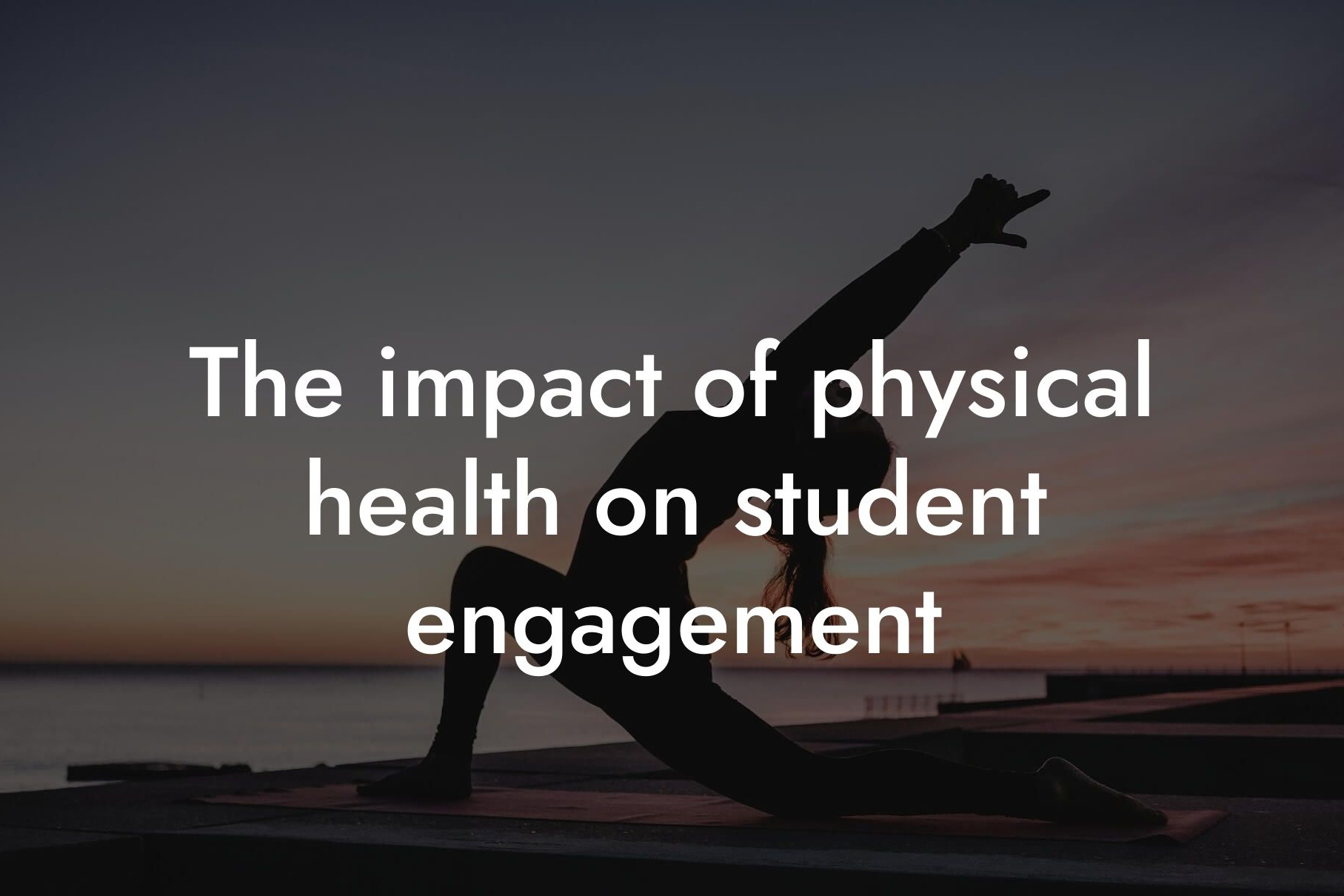As educators, creating an optimal learning environment is crucial for student success. While many factors contribute to a well-managed classroom, one often overlooked aspect is the physical fitness of the teacher. At Tano Performance Group, we understand the importance of physical fitness in various aspects of life, including professional performance. In this article, we'll explore the significant role physical fitness plays in classroom management and provide actionable tips for educators to improve their physical fitness and, in turn, their teaching effectiveness.
Table of Contents
Improved Energy and Endurance
Teaching is a physically demanding profession. Standing for long periods, moving around the classroom, and engaging with students can be exhausting. Regular physical activity and exercise can significantly boost energy levels, allowing teachers to maintain their enthusiasm and focus throughout the day. When teachers are physically fit, they're better equipped to handle the physical demands of teaching, reducing the likelihood of burnout and fatigue.
Enhanced Mental Clarity and Focus
Exercise has been shown to improve cognitive function, including concentration, attention, and memory. Physically fit teachers are more likely to remain mentally sharp, making them better equipped to manage their classrooms effectively. With improved mental clarity, teachers can respond to challenging situations more effectively, think on their feet, and make sound decisions in high-pressure situations.
Better Classroom Management through Body Language
Nonverbal cues play a significant role in classroom management. A physically fit teacher is more likely to exude confidence, authority, and enthusiasm, which can positively impact student behavior and engagement. Good posture, purposeful movement, and open body language can help teachers command respect, maintain order, and create a positive learning environment.
Role Modeling Healthy Behavior
Teachers are role models for their students, and their behavior can significantly influence student attitudes and habits. By prioritizing physical fitness, teachers demonstrate the importance of healthy living, encouraging students to adopt similar habits. This can lead to a more positive and productive classroom environment, as students are more likely to be focused, motivated, and respectful when they're physically and mentally well.
Reducing Stress and Anxiety
Teaching is a high-stress profession, and chronic stress can negatively impact teacher well-being and effectiveness. Regular exercise has been shown to reduce stress and anxiety levels, promoting a sense of calm and well-being. By managing their own stress levels, teachers can create a more peaceful and supportive learning environment, benefiting both themselves and their students.
Improved Communication and Interpersonal Skills
Physical fitness can also enhance communication and interpersonal skills, essential for effective classroom management. Regular exercise has been linked to improved mood, empathy, and social skills, allowing teachers to build stronger relationships with their students and colleagues. By being more approachable, empathetic, and understanding, teachers can create a more positive and inclusive classroom environment.
Tips for Teachers to Improve Physical Fitness
While incorporating physical fitness into a busy teaching schedule can be challenging, there are several strategies teachers can use to prioritize their physical health:
- Schedule exercise into your daily routine, even if it's just a 30-minute walk or jog
- Incorporate physical activity into your lunch break, such as yoga or a quick workout
- Find a workout buddy or join a fitness group to increase motivation and accountability
- Use technology, such as fitness apps or videos, to guide your workouts and track progress
- Make healthy food choices, focusing on whole, nutrient-dense foods to fuel your body
In conclusion, physical fitness plays a vital role in classroom management. By prioritizing their physical health, teachers can improve their energy levels, mental clarity, and overall well-being, leading to a more effective and productive learning environment. At Tano Performance Group, we understand the importance of physical fitness in achieving professional success. By incorporating physical fitness into their daily routine, teachers can take their teaching to the next level, benefiting both themselves and their students.
Our DEXA machine provides a comprehensive body assessment, giving high-earning professionals like teachers the information they need to optimize their physical fitness and take their careers to new heights. By understanding the importance of physical fitness in classroom management, teachers can create a more positive, productive, and supportive learning environment, ultimately leading to improved student outcomes and a more successful teaching career.
Frequently Asked Questions
What is the connection between physical fitness and classroom management?
Research has shown that physical fitness has a significant impact on cognitive function, emotional regulation, and social skills, all of which are essential for effective classroom management. When students are physically fit, they are more likely to be focused, attentive, and well-behaved, making it easier for teachers to manage the classroom environment.
How can physical fitness improve student behavior?
Physical fitness has been shown to reduce symptoms of ADHD, improve impulse control, and increase self-esteem, all of which can lead to improved student behavior. Additionally, regular physical activity can help reduce stress and anxiety, which can contribute to behavioral problems.
What are some ways to incorporate physical fitness into the school day?
There are many ways to incorporate physical fitness into the school day, such as recess, physical education classes, brain breaks, and extracurricular sports teams. Teachers can also incorporate physical activity into lesson plans, such as using movement to teach math concepts or having students act out historical events.
How can teachers encourage students to engage in physical activity?
Teachers can encourage students to engage in physical activity by making it fun and engaging, providing positive reinforcement, and offering choices and autonomy. For example, teachers can offer a "brain break" where students can choose from a variety of physical activities, such as jumping jacks, yoga, or dancing.
What are some benefits of physical fitness for teachers?
Physical fitness can have numerous benefits for teachers, including improved mental health, increased energy levels, and enhanced job satisfaction. Additionally, physically fit teachers are more likely to be role models for their students, encouraging them to prioritize physical fitness as well.
How can schools support teachers in prioritizing physical fitness?
Schools can support teachers in prioritizing physical fitness by providing resources and opportunities for physical activity, such as on-site fitness classes or gym memberships. Schools can also encourage teachers to incorporate physical activity into their daily routines, such as taking a walk during lunch or doing stretching exercises during breaks.
What is the impact of physical fitness on academic performance?
Research has shown that physical fitness has a positive impact on academic performance, particularly in areas such as math and reading. Physically fit students are more likely to be focused, attentive, and motivated, leading to improved academic achievement.
How can parents support their child's physical fitness?
Parents can support their child's physical fitness by encouraging physical activity outside of school, such as enrolling them in sports teams or providing opportunities for free play. Parents can also model healthy behaviors themselves, such as engaging in regular physical activity and prioritizing healthy eating.
What are some ways to make physical fitness fun for students?
There are many ways to make physical fitness fun for students, such as incorporating games and activities that require physical movement, using technology to track progress, and providing opportunities for choice and autonomy. Teachers can also make physical fitness a social activity, such as having students work in teams or participate in group fitness classes.
How can physical fitness improve student motivation?
Physical fitness can improve student motivation by providing a sense of accomplishment and self-efficacy. When students engage in regular physical activity, they are more likely to feel confident and capable, leading to increased motivation and engagement in academic tasks.
What is the relationship between physical fitness and emotional regulation?
Physical fitness has been shown to have a positive impact on emotional regulation, reducing symptoms of anxiety and depression. Regular physical activity can help students develop healthy coping mechanisms and improve their overall mental health.
How can physical fitness improve teacher-student relationships?
Physical fitness can improve teacher-student relationships by providing opportunities for bonding and connection. When teachers engage in physical activity with their students, they can build trust and rapport, leading to improved relationships and a more positive classroom environment.
What are some ways to incorporate physical fitness into lesson plans?
There are many ways to incorporate physical fitness into lesson plans, such as using movement to teach math concepts, having students act out historical events, or incorporating physical activity into science experiments. Teachers can also use physical fitness as a way to teach social skills, such as teamwork and communication.
How can physical fitness improve classroom morale?
Physical fitness can improve classroom morale by providing a sense of community and camaraderie. When students engage in physical activity together, they can develop a sense of belonging and connection, leading to improved morale and a more positive classroom environment.
What are some benefits of physical fitness for students with special needs?
Physical fitness can have numerous benefits for students with special needs, including improved motor skills, enhanced social skills, and increased confidence. Regular physical activity can also help reduce symptoms of anxiety and depression in students with special needs.
How can schools provide opportunities for physical fitness for students with special needs?
Schools can provide opportunities for physical fitness for students with special needs by adapting physical activity to meet individual needs, providing accommodations and modifications, and offering inclusive physical education programs.
What is the impact of physical fitness on student attendance?
Research has shown that physical fitness has a positive impact on student attendance, with physically fit students being more likely to attend school regularly. Regular physical activity can also improve overall health and well-being, reducing the likelihood of absenteeism due to illness.
How can physical fitness improve student engagement?
Physical fitness can improve student engagement by providing opportunities for active learning, increasing motivation, and enhancing overall well-being. When students are physically fit, they are more likely to be engaged and motivated in academic tasks.
What are some ways to make physical fitness a priority in schools?
Schools can make physical fitness a priority by incorporating physical activity into the daily routine, providing resources and opportunities for physical fitness, and encouraging teachers and staff to prioritize physical fitness as well.
How can physical fitness improve student self-esteem?
Physical fitness can improve student self-esteem by providing a sense of accomplishment and self-efficacy. When students engage in regular physical activity, they can develop a positive body image and improved self-confidence.
What is the impact of physical fitness on student mental health?
Physical fitness has been shown to have a positive impact on student mental health, reducing symptoms of anxiety and depression. Regular physical activity can also improve overall well-being and enhance cognitive function.
Here are some related articles you might love...
- The impact of physical health on student engagement
- How DEXA scans can benefit education professionals
- Nutrition tips for maintaining energy during lectures
- How educators can stay fit during long teaching days
- Balancing grading and lesson planning with personal fitness
- Managing stress through physical fitness in teaching
- Quick workouts for educators during breaks
- How to stay active in a sedentary teaching job
- The connection between fitness and effective teaching
Zak Faulkner
Zak Faulkner is a leading authority in the realm of physical health and body composition analysis, with over 15 years of experience helping professionals optimise their fitness and well-being. As one the experts behind Tano Performance Group, Zak has dedicated his career to providing in-depth, science-backed insights that empower clients to elevate their physical performance and overall health.
With extensive knowledge of DEXA technology, Zak specializes in delivering comprehensive body assessments that offer precise data on body fat, muscle mass, bone density, and overall physique. His expertise enables individuals to make informed decisions and achieve their fitness goals with accuracy and confidence. Zak’s approach is rooted in a deep understanding of human physiology, combined with a passion for helping clients unlock their full potential through personalised strategies.
Over the years, Zak has earned a reputation for his commitment to excellence, precision, and client-focused service. His guidance is trusted by top professionals who demand the best when it comes to their health. Whether advising on fitness programs, nutritional strategies, or long-term wellness plans, Zak Faulkner’s insights are a valuable resource for anyone serious about taking their health and fitness to the next level.
At Tano Performance Group, Zak continues to lead our Content Team revolutionising how professionals approach their physical health, offering unparalleled expertise that drives real results.




